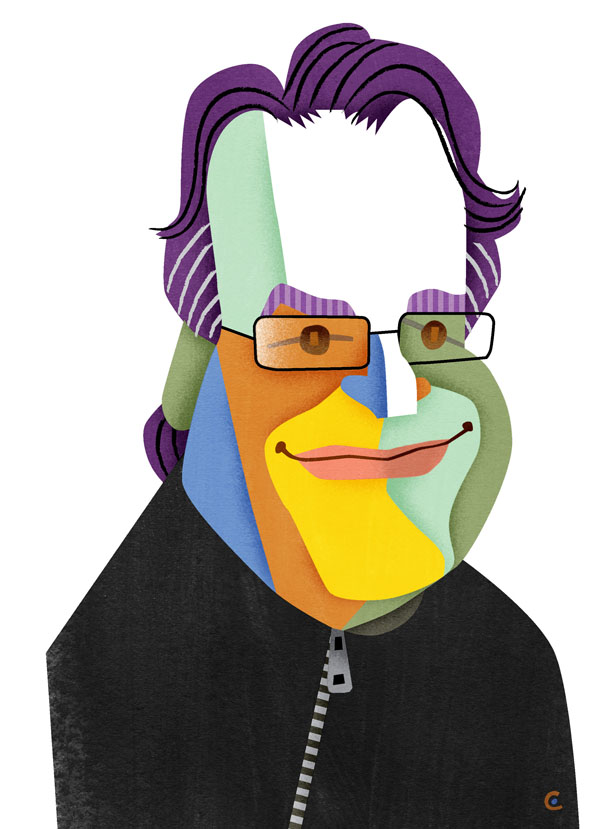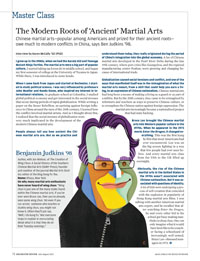Master Class
 (Photo: David Cowles for Rochester Review)
(Photo: David Cowles for Rochester Review)I grew up in the 1980s, when we had the Karate Kid and Teenage Mutant Ninja Turtles. The martial arts were a big part of popular culture. I started taking tae kwon do in middle school, and began my first semester of college at the University of Toyama in Japan. While there, I was introduced to some kendo.
When I came back from Japan and started at Rochester, I started to study political science. I was very influenced by professors John Mueller and Randy Stone, who inspired my interest in international relations. In graduate school at Columbia, I studied global political economy and got interested in the social stresses that occur during periods of rapid globalization. While writing a paper on the Boxer Rebellion, an uprising against foreign influence in China around the turn of the 20th century, I learned how the conflict involved martial artists. And as I thought about this, I realized that the social stresses of globalization were very much implicated in the development of the modern Chinese martial arts.
People always tell you how ancient the Chinese martial arts are. But as we practice and understand them today, they really originated during the period of China’s integration into the global economy. A lot of Chinese martial arts developed in the Pearl River Delta during the late 19th century, where port cities like Guangzhou, and the regional manufacturing center Foshan, were growing and changing because of international trade.
Globalization caused social tensions and conflict, and one of the ways that manifested itself was in the reimagination of what the martial arts meant, from a skill that could help you earn a living, to an expression of Chinese nationalism. Chinese martial arts had long been a means of making a living as a guard or as part of a militia. But by the 20th century, they came to be reimagined by reformers and teachers as ways to preserve Chinese culture, or to strengthen the Chinese nation against foreign oppression. The martial arts increasingly became a nationalized project that had state backing.
Bruce Lee brought the Chinese martial arts into Western popular culture in the 1970s. When he appeared in the 1973 movie Enter the Dragon, it changed everything. This was the first kung fu film that most Americans had ever encountered. Lee was on the big screen fighting in a way that few people had ever seen before. And every martial arts class from the USA to the UK filled up overnight.
Obviously, the rise of the Chinese martial arts in the United States in the 1970s wasn’t associated with Chinese nationalism. But it was associated with questions of identity. A lot of kids were undergoing a process of self-creation that coincided with the explosion in popularity of Hong Kong martial arts films. I was talking with another American martial arts expert, and he recalled that after watching Enter the Dragon, he and every other kid in his school got busy making nunchuks in shop class. One can only imagine what it would have been like to be a teacher facing a schoolyard of increasingly wellarmed, Bruce Lee–obsessed teenagers in 1973.
Benjamin Judkins ’98
Author, with Jon Nielson, of The Creation of Wing Chun: A Social History of the Southern Chinese Martial Arts (SUNY Press); founder and coeditor of the journal Martial Arts Studies; editor of the blog Kung Fu Tea.
Home: Ithaca, New York
On why many martial arts enthusiasts have never heard of wing chun: “Wing chun is just one of the many styles found within the Chinese martial arts. If you’ve ever seen Bruce Lee, then you’ve already seen some wing chun. Yet even if you run across someone who teaches or studies wing chun, you might not know it. Often they’ll just say, ‘Well, I do kung fu.’ Not everyone stops to explain in excruciating detail what it is that they do on their Tuesday evenings.”

